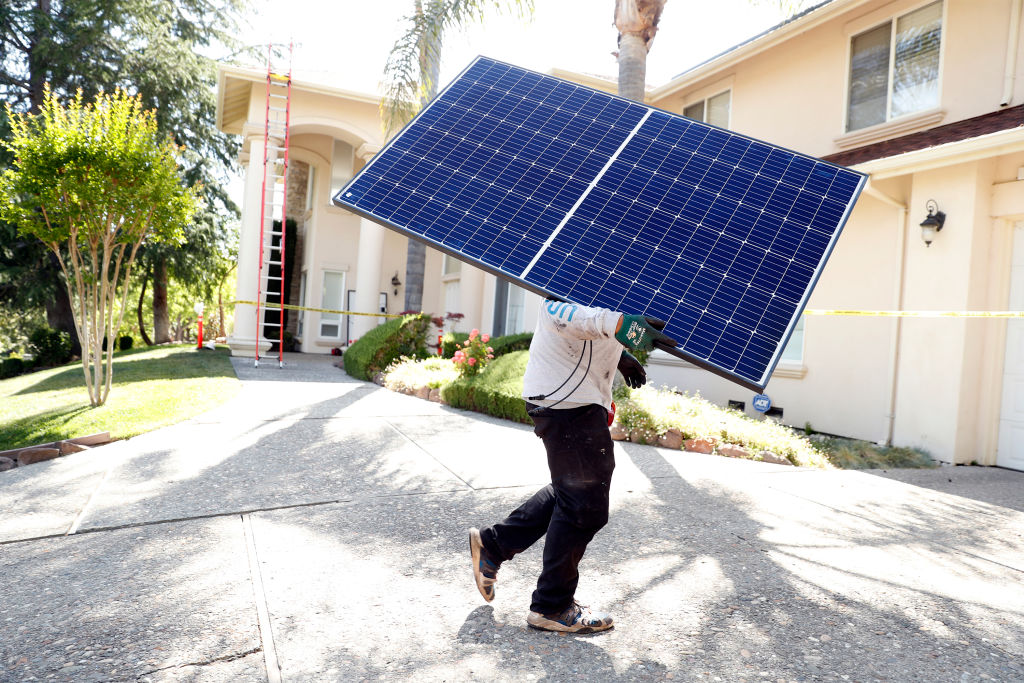
The Inflation Reduction Act (IRA), signed into law in August of 2022, includes $370 billion in investments targeted at lowering energy costs and tackling climate change. Though the bulk of the IRA comes in competitive grants, tax credits, and loans for businesses and government entities, there are a few provisions that will be applied as direct credits and rebates for consumers hoping to purchase an electric vehicle or make their homes more energy efficient.
Read More: How the Inflation Reduction Act Favors Homeowners
This tax season marks the first time that Americans can claim these credits from the IRA on their taxes, and the Biden Administration has said it will roll out the rebates later this year. Here’s how to take advantage of the new legislation:
More from TIME
Residential Clean Energy Tax Credit
(Also known as 25D, for the section of the tax code it falls under)
Homeowners can deduct 30% of the cost of new household clean energy systems like solar panels, small wind turbines, and battery storage technologies. The credit can be used for upgrades made between 2022 and 2032, and has no cap for the total amount spent. The credit will then wind down, with 26% available for service in 2033, 22% in 2034, and no credit available after December 31, 2034.
Energy Efficient Home Improvement Credit
(Also known as 25C, for the section of the tax code it falls under)
Homeowners can deduct 30% of the cost of certain energy improvement purchases, including exterior doors, exterior windows and skylights, home energy audits, and appliances including energy-efficient air conditioners, water heaters, heat pumps, and biomass stoves. The credit is for purchases made after January 1, 2023, and before January 1, 2033. There is a limit on this one: $1,200 a year for renovations, and $2,000 for appliances like heat pump water heaters.
Electric Vehicle Tax Credit
The IRA includes a $7,500 consumer tax credit for electric vehicle purchases; you are eligible if your adjusted gross income is up to $150,000 for individuals or $300,000 for joint filers. (This credit already existed but was set to expire at the end of 2022.) Beginning in 2024, this will become a point-of-sale credit, meaning you can get it when you’re buying a car at the dealer rather than having to claim it on your taxes. Only vehicles for which final assembly occurred in North America qualify starting on August 16, 2022 (the day that the ERA became law). Vehicles delivered after April 18, 2023 must also meet critical battery component requirements; the government keeps an updated list of eligible vehicles.
High Efficiency Electric Homes Rebate Program
Low and moderate income households—defined as households with incomes below 150% of the area median income—can receive a total of $14,000 in rebates for qualified electrification projects. There are maximums per equipment purchased, including $1,750 for a heat pump water heater, $8,000 for a heat pump that does space cooling and heating, and $840 for an electric stove. If your household has an income below 80% of the Area Median Income, you can get 100% of your costs covered.
Home Owner Managing Energy Savings Rebate Program
Homeowners and multifamily building owners can get rebates by making energy efficiency upgrades; the amount of money you can claim depends on how much energy you save. The max is $4,000 for most homeowners, and $8,000 for households earning less than 80% of the area median income. Multifamily building owners can also get this rebate, up to $400,000 per building.
More Must-Reads from TIME
- Cybersecurity Experts Are Sounding the Alarm on DOGE
- Meet the 2025 Women of the Year
- The Harsh Truth About Disability Inclusion
- Why Do More Young Adults Have Cancer?
- Colman Domingo Leads With Radical Love
- How to Get Better at Doing Things Alone
- Michelle Zauner Stares Down the Darkness
Contact us at letters@time.com